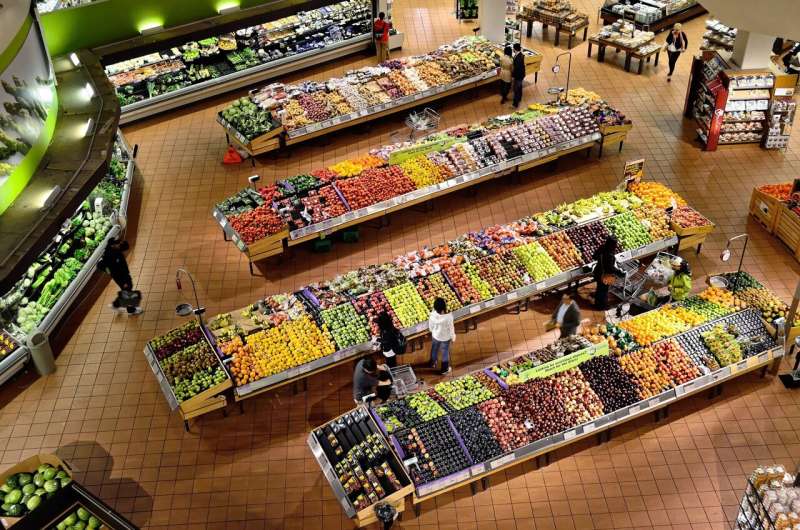This article has been reviewed according to Science X's editorial process and policies. Editors have highlighted the following attributes while ensuring the content's credibility:
fact-checked
trusted source
proofread
New research urges a rethink on how we view the value of our fruit and vegetables

Researchers have developed an innovative tool that aims to bridge the gap between nutritional guidelines and consumers' shopping habits, making it easier for everyday Australians to make healthy purchase decisions.
Researchers from Monash Business School have collaborated with the Ritchies Supermarket chain and Deakin University to launch Australia's first per-serving pricing tool for fresh produce.
The tool is being rolled out alongside traditional price per weight/kilogram advice, in the Victorian stores of Melbourne independent grocers, Ritchies Supermarkets.
Regular intake of fruit and vegetables is associated with a range of health benefits, including reduced risks of coronary heart disease and stroke. Australia's nutritional guidelines recommend that adults consume five to six 75g servings of vegetables and two 150g servings of fruit every day.
However, only 6.5% of Australian adults eat the recommended number of vegetable servings, while 55.9% fall short of the recommended fruit servings, according to the Australian Bureau of Statistics.
Intrigued by this disparity, as well as evidence linking affordability perceptions to vegetable and fruit consumption, the research team questioned the conventional practice of only pricing fresh produce by the kilogram.
Lead researcher, Associate Professor Fiona Newton from the Monash Business School, noted per kilogram pricing shows shoppers what it would cost to purchase 13.3 servings of vegetables or 6.67 servings of fruit.
In contrast, many pre-packaged food items are priced by the serving.
"Per kilogram pricing doesn't communicate how much is needed for a healthy serv[ing]. If shoppers overlook this aspect, the purchase may not seem like good value for money, which could flow on to their purchase decisions," said Associate Professor Newton.
"For example, green beans priced at $12.99 per kilogram may initially seem steep. However, this perception may change when shoppers see that the cost of a single 75g serv[ing] is only $0.97."
Associate Professor Newton and colleagues from Deakin University teamed up with Ritchies supermarkets to compare conventional per kilogram pricing information against a novel combination: providing per kilogram and per serving pricing.
The field trial took place in one store, with four additional comparison stores selected based on offering a similar range of fruit and vegetables and having similar transaction volumes, affluence group share, and fruit and vegetable prices to the trial store.
After introducing per-serving pricing information, the research team found an increase in the purchase of loose fresh vegetables at the trial store, suggesting that per-serving pricing helps consumers make purchase decisions consistent with meeting nutritional guidelines.
"Per-serv[ing] pricing offers consumers a straightforward way to gauge how much it will cost to meet their daily vegetable and fruit servings. We found adding per-serv[ing] pricing increased loose vegetable purchases by 6.2%, while fruit saw no significant impact," said Associate Professor Newton.
In Australia, the size of a serving of fruit is twice that of vegetables (150g versus 75g), which could have implications for perceptions of their value for money. The research team therefore retested the per-serving pricing cues in the U.K., where both fruit and vegetable recommended serving sizes are standardized at 80g.
In this follow-up online study involving 803 U.K. adults, per-serving pricing cues significantly increased both vegetable and fruit purchase intentions.
Further analysis demonstrated that this increase in purchase intentions could be attributed to fruit and vegetables being seen as providing greater value for money.
The Federal Government "eatforhealth" price per portion calculator will be available on the Ritchies Supermarkets webpage, to assist shoppers in understanding their average recommended serving size.
"We're really looking forward to undertaking future research to explore whether the pricing model helps reduce food waste," said Associate Professor Newton.
Provided by Monash University




















